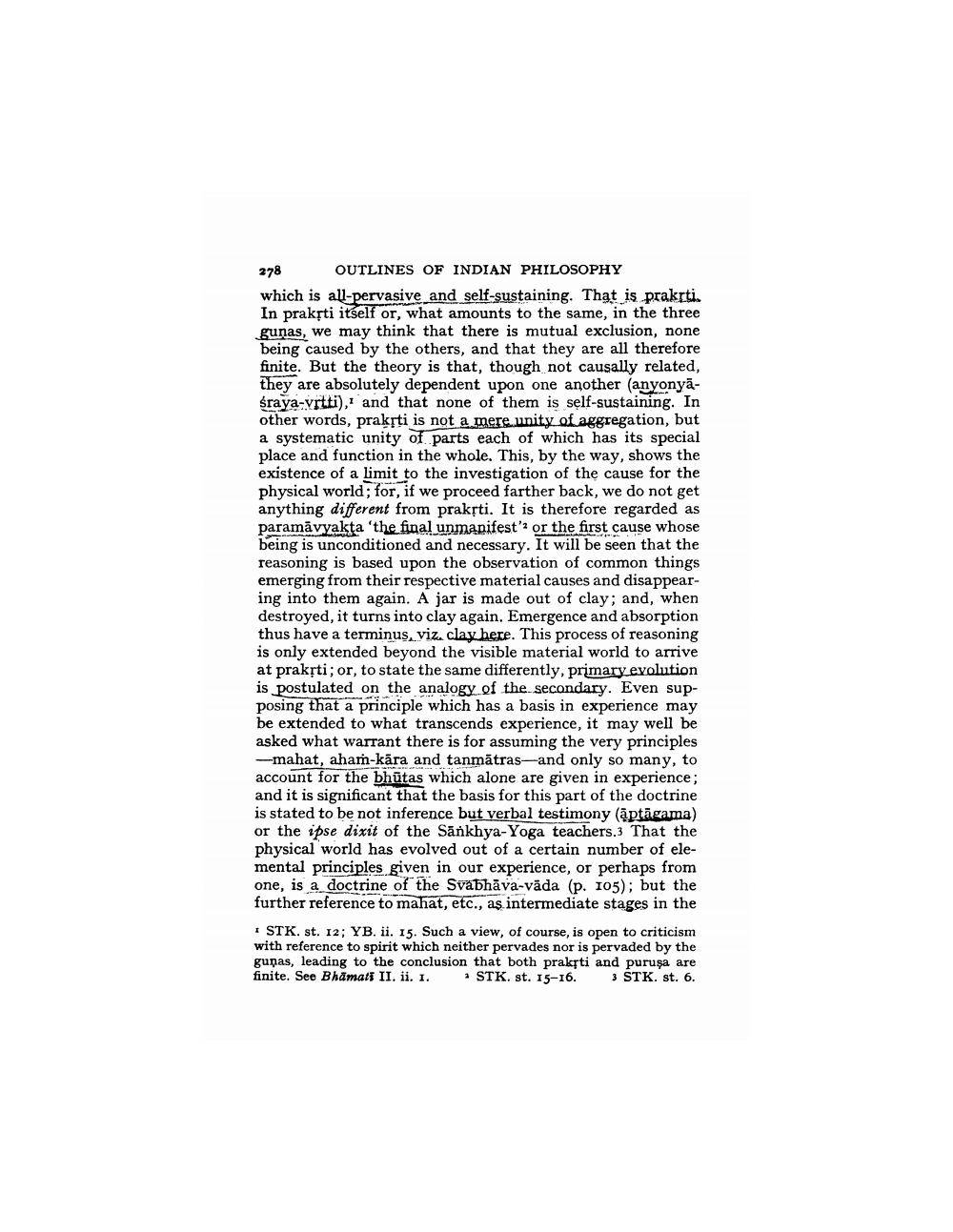________________
278
OUTLINES OF INDIAN PHILOSOPHY
which is all-pervasive and self-sustaining. That is prakrti. In prakṛti itself or, what amounts to the same, in the three gunas, we may think that there is mutual exclusion, none being caused by the others, and that they are all therefore finite. But the theory is that, though not causally related, they are absolutely dependent upon one another (anyonyāśraya-vrtti), and that none of them is self-sustaining. In other words, prakṛti is not a mere unity of aggregation, but a systematic unity of parts each of which has its special place and function in the whole. This, by the way, shows the existence of a limit to the investigation of the cause for the physical world; for, if we proceed farther back, we do not get anything different from prakṛti. It is therefore regarded as paramāvyakta 'the final unmanifest' or the first cause whose being is unconditioned and necessary. It will be seen that the reasoning is based upon the observation of common things emerging from their respective material causes and disappearing into them again. A jar is made out of clay; and, when destroyed, it turns into clay again. Emergence and absorption thus have a terminus, viz. clay here. This process of reasoning is only extended beyond the visible material world to arrive at prakṛti; or, to state the same differently, primary evolution is postulated on the analogy of the secondary. Even supposing that a principle which has a basis in experience may be extended to what transcends experience, it may well be asked what warrant there is for assuming the very principles -mahat, aham-kāra and tanmätras-and only so many, to account for the bhūtas which alone are given in experience; and it is significant that the basis for this part of the doctrine is stated to be not inference but verbal testimony (aptāgama) or the ipse dixit of the Sankhya-Yoga teachers.3 That the physical world has evolved out of a certain number of elemental principles given in our experience, or perhaps from one, is a doctrine of the Svabhava-vāda (p. 105); but the further reference to mahat, etc., as intermediate stages in the
1 STK. st. 12; YB. ii. 15. Such a view, of course, is open to criticism with reference to spirit which neither pervades nor is pervaded by the gunas, leading to the conclusion that both prakrti and puruşa are finite. See Bhamati II. ii. 1. a STK. st. 15-16. 3 STK. st. 6.




